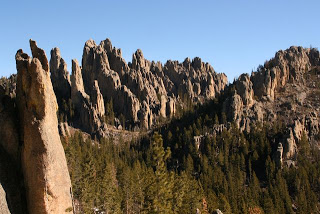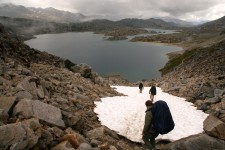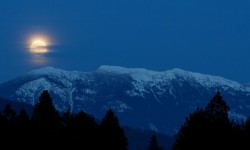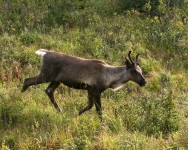The annual trip north usually coincides with the migratory birds but this year the trip began sooner. Idaho’s weather could have been mistaken for April weather with the balmy 50 plus degree temperatures and sunshine that continued to nearly Edmonton.
To avoid the snowy mountain passes of Jasper and Banff Parks, we decided to cross over Crow’s Nest pass in southern British Columbia and travel on the eastern side of the Rockies until Edmonton where we headed west to Grand Prairie. A route we haven’t taken yet.
An amazing sight in Crow’s Nest pass was Frank’s Slide–a huge landslide that buried a town and transferred an entire side of the mountain into the valley below. The amount of rubble strewn up the other side of the valley was colossal.
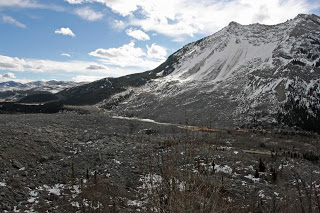 |
| Frank’s Slide near Crow’s Nest pass in southern B.C. |
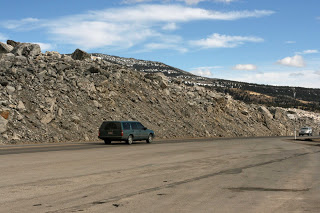 |
| A huge amount of rubble was cleared away to reopen the highway |
After Fort St. John, the temperatures started to drop and resemble normal winter temperatures. As we approached the coldest region of North America (Snag, Yukon), the temperatures were frigid–the lowest at minus 27 degrees Fahrenheit. Between Kluane Lake and Beaver Creek, Yukon, the temperature was below minus 20 more often than not.
 |
| Lowest temperature of the trip between Destruction Bay and Beaver Creek, Yukon |
The wildlife along the Alaska Highway are well-adapted to the cold temperatures and we spotted a variety. The usual herd of woodland buffalo was north of the Liard River with a few loners closer to Coal River. Elk grazed in a field near Toad River and six moose munched on willows west of Destruction Bay. While we didn’t spot the normal caribou near Toad River and Muncho Lake, we did see some between Fort St. John and Fort Nelson, along with a big herd between the Alaska border and Tok. On the smaller side of animal sightings were a snowy owl south of Edmonton and ptarmigan in the Yukon.
 |
| Buffalo north of the Liard River |
As we traveled north, the longer twilight was clearly evident. On the morning we left Haines Junction (early enough to see faint northern lights), the first hint of twilight was at 5:45 a.m. (Alaska time) and the sun finally rose at 8:00 a.m.
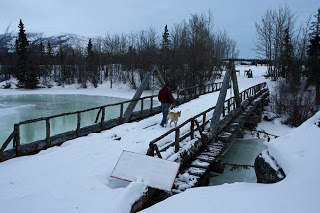 |
| The Canyon Creek Bridge was built in 1903 during the Gold Rush and was rebuilt in 1942 for the Alaska Highway. It is the only original bridge from the Alaska Highway still standing. |
Our first trip to Alaska with our travel trailer went smoothly even with sub-zero temperatures and was celebrated with delicious hamburgers at Fast Eddy’s in Tok.
 |
| With a temperature of minus 26 degrees, we didn’t turn off the truck for a quick break at a rest area in the Yukon. |

